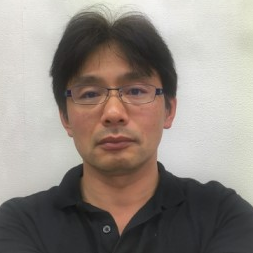Radiation: Occurrence, Transport and Effect
A special issue of Toxics (ISSN 2305-6304). This special issue belongs to the section "Metals and Radioactive Substances".
Deadline for manuscript submissions: closed (30 June 2024) | Viewed by 69321
Special Issue Editors
Interests: uranium; biometals; toxicology; SR-XRF; PIXE; imaging
Special Issues, Collections and Topics in MDPI journals
Interests: radiation biology; single cell biology; microbeam; heavy ions; radiation induced bystander effect; cytoplasmic damage response; DNA damage and repair
Special Issues, Collections and Topics in MDPI journals
Special Issue Information
Dear Colleagues,
We are exposed to various physical and chemical health hazards in our daily lives, even if each of them is at a non-risk level. Exposure to radiation is also happening all around us. The expansion of industrial and medical uses of radiation and nuclear accidents has led to growing public concern over their health effects. In general, toxicology studies hazardous substances and their potential toxicity, mechanisms of chemical reaction and toxic substations, and the construction of protocols for prevention, diagnosis, detoxification, and treatment. In addition, studies on the hazardous risks of radiation exposure and radionuclides are known as “radiotoxicology”, which includes the combined biological effect of chemical toxicity and radiation.
This Special Issue will aim to highlight the latest advances in radiotoxicological studies present in both low and high doses of ionizing radiation, that potentially harbor risks of mutation, carcinogenesis, and genomic instability. Authors are invited to submit original research papers, reviews, short communications, and technical notes on novel methods and advancements.
We hope this Special Issue will lead to improved understanding of radio-toxicology for researchers in different research fields.
We look forward to receiving your contributions.
Dr. Shino Homma-Takeda
Dr. Teruaki Konishi
Guest Editors
Manuscript Submission Information
Manuscripts should be submitted online at www.mdpi.com by registering and logging in to this website. Once you are registered, click here to go to the submission form. Manuscripts can be submitted until the deadline. All submissions that pass pre-check are peer-reviewed. Accepted papers will be published continuously in the journal (as soon as accepted) and will be listed together on the special issue website. Research articles, review articles as well as short communications are invited. For planned papers, a title and short abstract (about 100 words) can be sent to the Editorial Office for announcement on this website.
Submitted manuscripts should not have been published previously, nor be under consideration for publication elsewhere (except conference proceedings papers). All manuscripts are thoroughly refereed through a single-blind peer-review process. A guide for authors and other relevant information for submission of manuscripts is available on the Instructions for Authors page. Toxics is an international peer-reviewed open access monthly journal published by MDPI.
Please visit the Instructions for Authors page before submitting a manuscript. The Article Processing Charge (APC) for publication in this open access journal is 2600 CHF (Swiss Francs). Submitted papers should be well formatted and use good English. Authors may use MDPI's English editing service prior to publication or during author revisions.
Keywords
- radiotoxicity
- internal radionuclides
- radiation emitters and its distribution
- effects of alpha particles and charged particles
- low-dose effect
- defensive cellular response
- radiation induced bystander effect and abscopal effect
- radionuclide therapy
- decorporation
- monitoring and analytical methodology
- in vivo kinetics
- quantum beam sciences
- bioindicators and biomarkers
Benefits of Publishing in a Special Issue
- Ease of navigation: Grouping papers by topic helps scholars navigate broad scope journals more efficiently.
- Greater discoverability: Special Issues support the reach and impact of scientific research. Articles in Special Issues are more discoverable and cited more frequently.
- Expansion of research network: Special Issues facilitate connections among authors, fostering scientific collaborations.
- External promotion: Articles in Special Issues are often promoted through the journal's social media, increasing their visibility.
- Reprint: MDPI Books provides the opportunity to republish successful Special Issues in book format, both online and in print.
Further information on MDPI's Special Issue policies can be found here.







